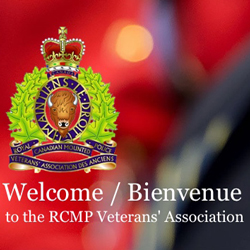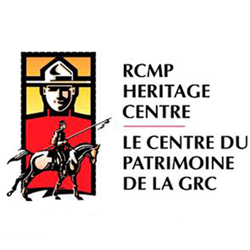Ric Hall’s Commissioner’s Annual Reports: 1883 to 1884
Veteran Ric Hall has undertaken an effort to review the early North West Mounted Police Annual Reports to the Canadian government.
In so doing, he has provided some of the notable details below for your reading pleasure.
Commissioner Irvine once again meets his Diary Date, January 01, 1884, for his Annual Report for 1883. It is interesting that this report it is forwarded onto the Governor General.
“To His Excellency the Most Honourable the Marquis of Landsdowne, Governor General of Canada, etc., etc.
May It Please Your Excellency,
The undersigned has the honor to lay before Your Excellency the Annual Report of the Commissioner of the North-West Mounted Police Force.
Respectfully submitted,
John A. MacDonald,
Superintendent General of Indian Affairs.
Ottawa, 1st February, 1884
Note:They cannot seem to agree on the spelling of “honour” many times it is spelt “honor.”
Weapons – Still no action on the California Saddle another recommendation is made for its acquisition. More buckboards are needed. “The clothing and kit supplied last year are with few exceptions, of most excellent quality and make.” “The new Winchester rifle supplied is a most excellent arm, and of very superior manufacturer. It is, in every respect, well adapted to our use. The same remarks apply with equal force, to the new revolvers.”
“The manner of carrying the Winchester carbines on horseback is a subject that, in the past, has been a vexed one. Many different opinions have existed throughout the Force. Having given the matter careful consideration, and bearing in mind the various results of the long practical experience acquired by us, I have arrived at the following conclusion; We must have two separate and distinct methods of carrying the carbine on horseback.
1st – In a bucket attached to the saddle.
2nd – By its being attached to a sling on the carbine itself, such sling passing across the rider’s body, the stock resting in a small open leather shoe, attached to the saddle.
The Bucket to be used in long marches, where there is no probability of the men coming into action, and also on ordinary mounted drill parades. The Sling to be used in cases where a probability exists of men coming into action at any moment; and again by men sent out in small numbers, on detachment patrolling duty. As the horse has, in any case, to bear the weight of the carbine, it is obvious that as far as possible, consistent with safety, the rider should be relieved of its weight and encumbrance. Thus, on long marches where a large body of men are employed, the bucket is the proper place for the carbine. And on ordinary drill parades, carrying the carbine in the bucket is decidedly the most convenient way, it presents a neater and more uniform appearance than could otherwise be obtained, beside allowing the man to perfectly free in controlling and guiding his horse.”
Commissioner Irvine’s Annual Report for 1884 outlined:
Much of his report deals with individual cases and the “indiscriminate camping of Indians in the vicinity of towns and villages in the North West, and as to a suggestion by the Deputy Superintendent General of Indian Affairs, that Indians should not be allowed to leave their reserve without a permit from the local Indian agent. I pointed out that the introduction of such a system would be tantamount to a breach of confidence with the Indians generally, inasmuch as from the outset the Indians had been led to believe that compulsory residence on reservations would not be required of them, and that they would be at liberty to travel about for legitimate hunting and trading purposes. This concession largely contributed to the satisfactory conclusion of the treaty with the Blackfeet, and I am sure that your decision in the matter, namely that discretionary power, according to circumstances, should be vested in the officers of police, was wise and sound. As to the complaints which were made to the Deputy Superintendent General on the occasion of his visit to the Territories, I would remark that this social evil is as difficult of repression in an Indian as in other communities, and that for its existence the white man is solely to blame.”
Early in the year the NWMP dealt with two murders in the Calgary area. One involved the death of a “negro.” The suspect was easily identified and he admitted to the murder. He was hung two months later. In April the “brothers Stevenson” were hung at Regina after being sentenced the previous September for a murder. “It is satisfactory to record that at the last moment, when the prisoner’s were compelled to abandon all hope of pardon, they fully admitted their guilt and the justice of their sentence.”
“Buckskin Shorty” was stabbed and killed at Calgary in June during a drunken quarrel. He was tried by Colonel MacLeod and a jury and found him guilty of manslaughter, and sentenced to six months’ imprisonment with hard labour.
The CPR – “The progress of the Canadian Pacific Railway has been made as uninterruptedly as heretofore.”
Horse Stealing – “The prevalence of horse stealing by white men, half-breeds and Indians, indiscriminately throughout the Territories, is a marked feature of this year’s annals of crime, and in connection therewith I would take leave to say a few words which are not uncalled for by past experience. The extension of the boundaries of police jurisdiction from Manitoba on the one side to a point 150 miles west of the summit of the Rocky Mountains on the other, has of, course, considerably diminished the effective strength of the force available for duty in the Territories; and that taken in conjunction with the fact that in the month of June last no less than thirty-six non-commissioned officers and men took their discharge on completion of their term of service, cannot but have detracted from our ability to afford police assistance in many cases. It is necessary to record that police posts, as now constituted, containing valuable Government stores, cannot be absolutely denuded of their occupants under any circumstances; further, that even police horses have their limits of endurance.”
Lunatics – “I would strongly urge the adoption of some method whereby lunatics who have been committed to custody as “dangerous” can be provided for other than in the police guard room. These lunatics have for the most part been very violent, and objectionable in every way, and their ceaseless chatter and howling has seriously interfered with the rest of the other prisoners and of the guard.” Well it seems this particular problem has not changed much after 140 years!
Augmentation of Force – “I trust in the foregoing report, I have sufficiently shown the need of an increase to the number of non-commissioned officers and men in the force, to enable us to comply with the daily increasing requirements of advancing settlement and civilization. If I may suggest, I would say that 300 additional men should be obtained as soon as possible; that these should be recruited in Eastern Canada; should be men of undeniable physique and character, accustomed to horses and able to ride. With such men the necessary training, including a course of instruction in police duties, can be more rapidly completed than if equitation, in addition to the rudiments of foot and arm drill, has to be taught.”
Drill Instructors – “Hitherto the police demands upon us have left us no men to instruct. Recruits, as fast as engaged having been drafted away to one post or another; but if, as I trust, the strength of the force is to be increased, an efficient staff of instructors is indispensible.”

Photograph of two North West Mounted Police members (Source of photo – RCMP Veterans’ Association – Vancouver Division Photo Collection).
Clothing and Kit – “The clothing and kit supplied are generally satisfactory, but the want of competent tailors is much felt. I would very strongly recommend the establishment of a master tailor and staff at headquarters, by whom the several articles of clothing can be fitted to the recipients. It is found that the articles of uniform are not at all times, made strictly according to the measurements of the various sizes, and whether or not, a certain amount of alterations is invariably necessary, entailing inconvenience and undue expense.”
State of the Force – total of 23 officers, 3 surgeons, 88 non-commissioned officers, 443, constables and 349 horses, 4 ponies and one stallion. 107 remounts were purchased during the year.


 February 26, 2015
February 26, 2015 










